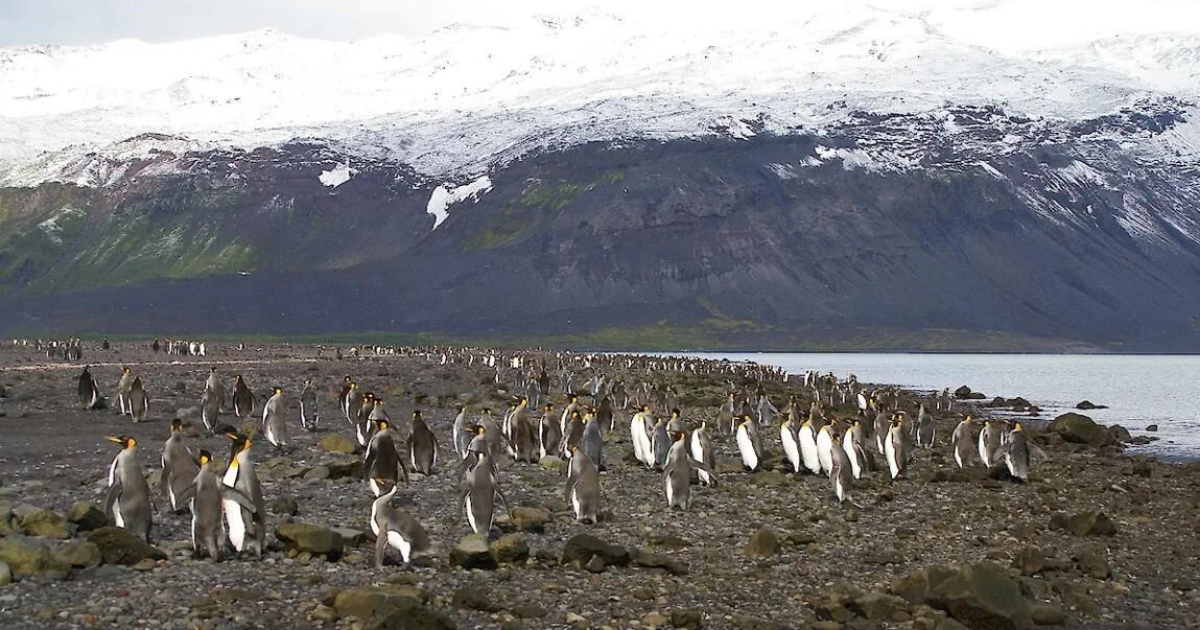April 3, 2025 / 11:28 AM EDT / CBS/AFP
With his announcement of widespread new tariffs on Wednesday, President Trump spared very few places in the world from his effort to upend global trade — not even the remote Heard Island and McDonald Islands, a sub-Antarctic Australian territory inhabited by penguins, but no people.
The islands were listed among the nations and territories hit by the Trump administration’s universal 10% tariff, along with mainland Australia.
Managed by the Australian government’s Antarctic Division, “the islands are unoccupied by humans and remain one of the world’s least anthropogenically disturbed areas,” according to an official website.
“Due to the extreme isolation of Heard Island and McDonald Islands, together with the persistently severe weather and sea conditions, human activities in the region have been, and remain, limited,” the Australian government website explains. “Terrestrial and marine research, undertaken as part of the Australian Antarctic science program, is currently the main human use of the Marine Reserve, while commercial fishing in the adjacent HIMI fishery is the most frequent activity in the region.”

“Since the first landing on Heard Island in 1855, there have been only approximately 240 shore-based visits to the island, and only two landings on McDonald Island (in 1971 and 1980),” the website says.
Norfolk Island, another remote Australian territory with a population of just over 2,000, was hit with an even greater tariff of 29%, nearly three times higher than the Australian mainland.
Australian Prime Minister Anthony Albanese expressed puzzlement Thursday over that decision.
“I’m not sure what Norfolk Island’s major exports are to the United States and why it’s been singled out, but it has,” Albanese told reporters. “I’m not quite sure that Norfolk Island, with respect to it, is a trade competitor with the giant economy of the United States.”
Norfolk Island lies 1,000 miles northeast of Sydney, and its main industry is tourism. The island’s chamber of commerce says it ranked as the world’s number 223 exporter in 2019, shipping goods worth about $1.7 million, led by soybean meal and sowing seeds.
 A view of historic buildings on the Australian territory of Norfolk Island, with Emily Bay and Nepean Island visible in the background. Kerry Kissane/Getty
A view of historic buildings on the Australian territory of Norfolk Island, with Emily Bay and Nepean Island visible in the background. Kerry Kissane/Getty
The tariff on Norfolk Island “exemplifies the fact that nowhere on Earth is exempt from this,” Albanese said, noting that it was unclear to him why the island would face a steeper tariff than the rest of Australia.
“Last time I looked, Norfolk Island was a part of Australia,” he later told public radio network ABC, describing it as “somewhat unexpected and a bit strange.”
Data compiled by the Observatory of Economic Complexity indicates that, in 2023, Norfolk’s exports to the U.S. amounted to $655,000 worth of goods, the vast majority of which was leather footwear.
The Guardian quoted the island’s administrator, George Plant, as disputing those figures on Thursday, however.
“There are no known exports from Norfolk Island to the United States and no tariffs or known non-tariff trade barriers on goods coming to Norfolk Island,” he told the British newspaper.
